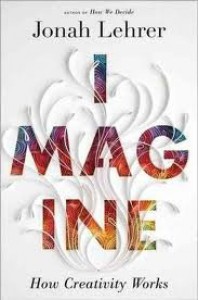299
Followers
212
Following
Reflections
Eager reader of history, mystery, classics, biographies, steampunk, lit fic, science, scifi, and etc. My reviews are mostly positive--I rarely finish or write about books I don't enjoy. My TBR is too high for that.
Imagine: How Creativity Works
 Imagine is not a how-to book--it’s an entertaining, research backed exploration of creativity with fascinating anecdotes whose topics range from how Bob Dylan writes songs to how masking tape was invented—but reading it sent my mind into an idea-generating frenzy, and it’s filled with information about what environments and states of mind are most conducive to inspiration. As you’d expect from something as fickle as creativity, those conditions vary widely and even contradict each other. A relaxed, very early morning type of mind can synthesize its way to innovation, but that flash of insight may be based on observations made when the mind was focused, and focus may be needed later to perfect or implement the breakthrough. Then again, focused concentration isn’t the only way to gather creativity stimulating information, simply wandering around in the world, seeing things, hearing music, or talking to people can be just as fruitful. Some companies, including Pixar, have tried to recreate the conditions of cities where people are crowded together and constantly bumping into each other, because doing so facilitates the exchange of ideas between departments and leads to better products. In Pixar’s case it was Steve Jobs, on hiatus from Apple, who insisted that it would be a good idea to have everyone in the company use the same central bathrooms and snack bar.There’s a very interesting section on brainstorming that was used as the basis for an article in the New Yorker. In the classic brainstorming session no ideas are ever criticized, the thinking is that criticism would frighten away good ideas, but it turns out it’s more productive to discuss, scrutinize and even challenge any ideas put on the table. This discussion can refine, perfect or combine half formed suggestions, transforming them from weak notions to strong proposals.The ideas presented in Imagine are available in other books, some of which cite the scientific literature they are based on which Jonah Lehrer does not do as thoroughly, but Imagine is engaging and readable, and its anecdotal style makes abstract concepts about creativity and brain function easy to comprehend.
Imagine is not a how-to book--it’s an entertaining, research backed exploration of creativity with fascinating anecdotes whose topics range from how Bob Dylan writes songs to how masking tape was invented—but reading it sent my mind into an idea-generating frenzy, and it’s filled with information about what environments and states of mind are most conducive to inspiration. As you’d expect from something as fickle as creativity, those conditions vary widely and even contradict each other. A relaxed, very early morning type of mind can synthesize its way to innovation, but that flash of insight may be based on observations made when the mind was focused, and focus may be needed later to perfect or implement the breakthrough. Then again, focused concentration isn’t the only way to gather creativity stimulating information, simply wandering around in the world, seeing things, hearing music, or talking to people can be just as fruitful. Some companies, including Pixar, have tried to recreate the conditions of cities where people are crowded together and constantly bumping into each other, because doing so facilitates the exchange of ideas between departments and leads to better products. In Pixar’s case it was Steve Jobs, on hiatus from Apple, who insisted that it would be a good idea to have everyone in the company use the same central bathrooms and snack bar.There’s a very interesting section on brainstorming that was used as the basis for an article in the New Yorker. In the classic brainstorming session no ideas are ever criticized, the thinking is that criticism would frighten away good ideas, but it turns out it’s more productive to discuss, scrutinize and even challenge any ideas put on the table. This discussion can refine, perfect or combine half formed suggestions, transforming them from weak notions to strong proposals.The ideas presented in Imagine are available in other books, some of which cite the scientific literature they are based on which Jonah Lehrer does not do as thoroughly, but Imagine is engaging and readable, and its anecdotal style makes abstract concepts about creativity and brain function easy to comprehend.


